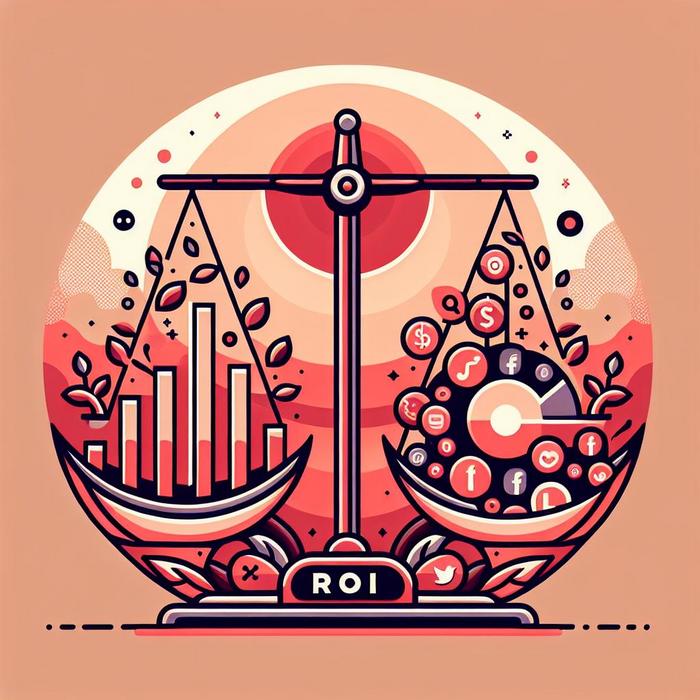Balancing Investment and Returns in the World of Digital Marketing
COOs continually find themselves between a rock and a hard place. With continuously evolving digital marketing dynamics, you might find yourself constantly deliberating on how best to allocate advertising capital, to yield optimal results. The underpinning question is, how can you leverage effective bidding tools to achieve maximum ROI and enhance ad efficiency?
Investment Allocation: The Critical Role of Bidding Tools
Understanding the role that strategic bidding plays in modern advertising is an essential starting point in streamlining this process. To enhance ad efficacy, and in extension, to maximize ROI, requires a deep understanding of the key performance indicators (KPIs) around your advertisements.
Bidding tools provide critical insights into your ad performance metrics. These tools are designed to evaluate the probable performance of different ad placements on platforms such as Google, Meta, and TikTok, which can greatly aid in the allocation of advertising capital. They offer dynamic, technological advantages that can boost business growth and revenues.
Enhancing Ad Efficiency: Beyond the Basic Bidding Tools
In the realm of online advertising, not all bidding tools are equal. COOs need to delve deeper and embrace an avant-garde approach towards leveraging advanced bidding technologies available for platforms like Google, Meta, and TikTok.
Newer bidding tools, built on the pillars of artificial intelligence and machine learning, enable far more dynamic optimization. They help in predictive modeling, thereby assisting in maximizing advertising reach and reception, based squarely on quantifiable data.
But how does one determine which technology will provide the maximum bang for your buck?
Choosing the Right Bidding Tool: Factors to Consider
Choosing the right tool can sometimes feel like threading a needle. Here are some pivotal factors that can guide your decision-making process:
- The Market in Focus: Specific markets interact with ads differently. Therefore, the choice of platform and the corresponding bidding tool should align with the market you aim to target.
- The Advertising Budget: The choice of tool should accommodate your budget constraints. Advanced bidding technologies might require a higher initial investment but could lead to an improved ROI in the long run.
- The Business Model: The choice of tool should be in sync with your business objectives and KPIs. The best tools are those that can offer real-time, actionable insights tailored to your business model.
Building a Result-Oriented Advertising Strategy
In the end, building a robust and result-oriented advertising strategy takes more than just selecting the right bidding tools. It requires in-depth industry knowledge, strategic foresight, and the ability to harness the power of the latest technologies to optimize ad placements effectively.
In this bid to achieve maximum ROI, COOs need to stay flexible and adaptive. Adapting to new technologies, tweaking strategies based on emerging trends and insights, and maintaining an open mind towards learning can centralize ROI maximization and ad efficiency.
Each step forward in this direction is a step towards a stronger, more efficient, and more profitable future.
Finding the Balance: Investment, Returns, and Risk
Executives in any industry are constantly grappling with the task of finding the right equilibrium. It’s a delicate act of balancing investment returns against the inherent risks. And in the modern economy, precision advertising efforts can either provide a surplus of returns or lead to a deficit in the digital marketplace.
Creating an environment that favors a profitable ROI involves profound understanding of the functional dynamics of the marketplace, combined with critical analysis and interpretation of data. Executives must harness the power of innovative technological solutions to accurately predict audience behavior and align marketing strategies for optimal impact. This can be achieved using AI-powered ad solutions that streamline ad placement while preserving budgetary constraints, without compromising on reach and efficacy.
Strategic Planning: Maximizing Efficiency
The value of a robust, data-driven approach cannot be overstated. For marketing professionals, drip-feeding investments through various ad channels and then collating responses to find the highest yield is an approach worth considering. Keeping an active pulse on the trends of your specific industry specifications and requirements is key to maintaining an effective online campaign. Additionally, a targeted focus on your business model and corporate objectives can guarantee substantial growth in revenues.
The use of advanced analytic tools can also prove invaluable in this pursuit. Making use of efficient ad spend solutions, for example, can directly influence your company’s bottom line by reducing wasted efforts and harnessing the full potential of every advertising dollar.
Machine Learning: A Game Changer in the Advertising Sphere
As the digital sphere continues to evolve, staying adaptive and open to new technologies is a must. Machine learning algorithms, for instance, have begun to play a significant role in refining the predictability of ad-led business campaigns. Facilitated by significant strides in artificial intelligence, machine learning systems offer insights into advertising processes with a detail and accuracy previously unattainable.
These technologies help in accurate forecasting of audience behavior, allowing businesses to push their boundaries and explore the potency of their advertising campaigns. With predictive accuracy, businesses can optimize their campaigns for better reach, increased engagement, and ultimately, improved ROI.
Adaptability: The Key to Success
Executives need to position themselves to stay ahead of the curve. This flexibility to understand and embrace new advancements can make the difference between an average campaign and an extraordinary success.
Adapting is not akin to spontaneous decision-making. Rather, it involves strategic investments in tools and technologies that add value by improving efficiency and accuracy. As companies adapt to these newer, more sophisticated tools, they can extract precise, actionable data and insights critical to ensuring optimum ROI.
Success Doesn’t End With ROI
With the right tools and up-to-date strategies, executives can rest assured that their efforts are turning over a respectable ROI. However, the success of a business does not cease with profit making. High-level executives must always stay prepared to read and react to market trends while remaining devoted to continuous learning.
The road to success in the digital marketplace may indeed be intricate and demanding. However, with effective utilization of tools, technology, clear planning, and nimble adaptability, the investment-return balance is by no means unattainable. The constant pursuit of innovation and growth can fuel sustainable profitability, thus building an even stronger, efficient, and promising future.
Digital marketing offers abundant avenues for exponential growth. Determining how to best navigate this vast scape will define the legacy of today’s high-level executives.










Solid piece on optimizing ad campaigns. Emphasizing AI and machine learning for better predictive modeling fits well in today’s fast-paced market. Exploring advanced bidding tools could be pivotal for improved conversion rates and enhanced ROI.
advanced bidding tools with ai and machine learning capabilities do promise enhanced conversion rates, but choosing the right one still hinges on business objectives and budget.
while ai-powered tools can help optimise ad results, they’re just one piece of the puzzle that is influenced by market trends, budget, and business goals.